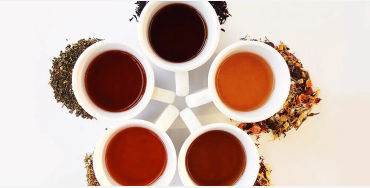
Tisanes are 'teas' made with no Camellia Sinensis plant leaves. Peppermint tea, chamomile tea, rooibos tea, hibiscus tea, lemon verbena tea, and other teas are examples. The vast majority, if not all, are caffeine-free! A fun fact: caffeine is still present in decaffeinated coffee in small amounts, averaging around 3%. Caffeine is extracted from green beans using the swiss water method, carbon dioxide method, methylene chloride method, or ethyl acetate method while they are still green (pre-roast).
Related Quotes

This seed is encased in a poisonous, kidney-shaped shell. Anacardic Acid, the poison, is identical to the toxin found in poison ivy. This oily substance irritates the skin, generating an allergic reaction. Because of the poisonous chemical on the shell, cashew nuts are not sold in their shells like peanuts.
We also learned that Swiggy is doing its part to help keep its employees safe and protected from the ongoing dangers of the pandemic. The company announced in 2021 that it would pay for the costs involved with the vaccination for its delivery partners. In response to the need for vaccination sites to accomplish this lofty goal, Swiggy set up a Health Hub to provide access to the vaccination clinics across Chennai, Tamil Nadu in March. The hope is that the vaccination of the workers who partner with Swiggy to get deliveries made would help to slow the spread of the disease throughout India, and to help the country return to a more normal state of business operations.
When the worldwide pandemic hit, nearly every kind of business was impacted. While delivery services were in high demand, the number of business closures and people who were unemployed hit all segments of the economy in India as well as throughout other parts of the world. Swiggy had grown large in the size of its network and had employed thousands of workers in various parts of India. Because of the lack of businesses in operation, the Covid-19 pandemic forced Swiggy to lay off more than 1000 of its workforce.
According to the CDC, approximately 7% of children between the ages of 3 and 17 years old have been diagnosed with anxiety. Since children are still developing their verbal skills they can’t say, “I have anxiety” or “I’m really worried.”
Instead, their anxiety shows up in complaints such as stomach aches, headaches, or behavioral issues like temper tantrums. Other common anxiety symptoms in children include restlessness, inattention, avoidance, and frequent meltdowns. Sadly, these symptoms often get misdiagnosed as ADHD – and then medicated.
Instead, their anxiety shows up in complaints such as stomach aches, headaches, or behavioral issues like temper tantrums. Other common anxiety symptoms in children include restlessness, inattention, avoidance, and frequent meltdowns. Sadly, these symptoms often get misdiagnosed as ADHD – and then medicated.

